Ph−C≡C−CH3HgSO4−−−→H2SO4A,




To solve the given problem, we will perform the hydration of the alkyne, phenylprop-1-yne (Ph-C≡C-CH₃), using mercuric sulfate (HgSO₄) in the presence of sulfuric acid (H₂SO₄). The process involves several steps, including the formation of a carbocation, nucleophilic attack, and tautomerization. Here’s a step-by-step breakdown of the reaction:
Step 1: Identify the Reactants
The starting compound is phenylprop-1-yne (Ph-C≡C-CH₃), which is an alkyne. The reagents used for hydration are mercuric sulfate (HgSO₄) and sulfuric acid (H₂SO₄).
Step 2: Electrophilic Addition
In the presence of HgSO₄ and H₂SO₄, the alkyne undergoes electrophilic addition. The mercuric ion (Hg²⁺) acts as an electrophile and adds to one of the carbon atoms of the triple bond, forming a cyclic mercurinium ion intermediate.
Step 3: Formation of the Carbocation
The addition of Hg²⁺ to the alkyne creates a more stable carbocation. According to Markovnikov's rule, the hydroxyl group (OH) will attach to the more substituted carbon atom of the alkyne. In this case, the more stable carbocation will be formed at the carbon adjacent to the phenyl group due to resonance stabilization.
Step 4: Nucleophilic Attack by Water
Water (acting as a nucleophile) attacks the more stable carbocation, leading to the formation of a compound with an OH group and a Hg group attached to the carbons.
Step 5: Elimination of the Mercuric Ion
The next step involves the elimination of the mercuric ion (Hg²⁺) from the intermediate, resulting in the formation of an enol (Ph-C(OH)=C-CH₃).
Step 6: Tautomerization
The enol undergoes keto-enol tautomerization, where the double bond shifts, and a hydrogen atom migrates to form a more stable ketone. The double bond shifts from between the two carbons to between the carbonyl carbon and the adjacent carbon, resulting in the formation of the final product.
Final Product
The final product (A) is phenylacetone (Ph-C(=O)-CH₂-CH₃), which has a carbonyl group (C=O) and is more stable than the enol form.
Summary of the Reaction
The overall reaction can be summarized as follows:
Ph-C≡C-CH3HgSO4,H2SO4−−−−−−−−→Ph-C(=O)-CH2CH3
Final Answer
The product A is phenylacetone (Ph-C(=O)-CH₂-CH₃).
---
The starting compound is phenylprop-1-yne (Ph-C≡C-CH₃), which is an alkyne. The reagents used for hydration are mercuric sulfate (HgSO₄) and sulfuric acid (H₂SO₄).
In the presence of HgSO₄ and H₂SO₄, the alkyne undergoes electrophilic addition. The mercuric ion (Hg²⁺) acts as an electrophile and adds to one of the carbon atoms of the triple bond, forming a cyclic mercurinium ion intermediate.
The addition of Hg²⁺ to the alkyne creates a more stable carbocation. According to Markovnikov's rule, the hydroxyl group (OH) will attach to the more substituted carbon atom of the alkyne. In this case, the more stable carbocation will be formed at the carbon adjacent to the phenyl group due to resonance stabilization.
Water (acting as a nucleophile) attacks the more stable carbocation, leading to the formation of a compound with an OH group and a Hg group attached to the carbons.
The next step involves the elimination of the mercuric ion (Hg²⁺) from the intermediate, resulting in the formation of an enol (Ph-C(OH)=C-CH₃).
The enol undergoes keto-enol tautomerization, where the double bond shifts, and a hydrogen atom migrates to form a more stable ketone. The double bond shifts from between the two carbons to between the carbonyl carbon and the adjacent carbon, resulting in the formation of the final product.
The final product (A) is phenylacetone (Ph-C(=O)-CH₂-CH₃), which has a carbonyl group (C=O) and is more stable than the enol form.
The overall reaction can be summarized as follows:
Ph-C≡C-CH3HgSO4,H2SO4−−−−−−−−→Ph-C(=O)-CH2CH3
The product A is phenylacetone (Ph-C(=O)-CH₂-CH₃).
Similar Questions
Complete the following equations:
a) H2C=CH−CH3+HCl→(A)
b) CH3−CH=C(CH3)2+O3Zn−−→H2O(A)+(B)
c) H2C=CH2+O3H2O−−→(A)NaOH(aq)−−−−−−→(B)+(C)
d) (CH3)3C−CH=CH2+HC<o(A)
d) MeCH2C≡CHNaNH2−−−−→(A)Et.Br−−−→(B)
g) HC≡CHH2,Pd(CaCO3)−−−−−−−−−−→(CH3COO)2Pb(A)Br2−−→Cl4(B)KOH(alc)−−−−−−→(C)
h) HC≡CHHgSO4,H2O−−−−−−−→H2SO4(A)H−−−→LiAlH4(B)concH2SO4−−−−−−→443K(C)
i) CH3CH=(CH2)Br2A773KCl2−−→773K(B)
j) CH3CH=CH2Br2−−→773K(A)KOH(alc)−−−−−−→Δ(B)
k) H2C=CH2+CH2+CH2→(A)
l) CH3CH=CH2+CH2I2→(A)
m) H2C=CH−CH=CH2+H2=CH2→(A)H2−−→Pd(B)
n) C3H7CH=CH2Hg(OAc)2−−−−−−→THF/H2O(A)NaBH4/NaOH−−−−−−−−−→(B)
o) CH3CH=CH2BH3/THF−−−−−−→(A)CH3COOH−−−−−−→(B)
p) C6H5CH=CH2Br2−−→(A)3.0equiv−−−−→CH3I(B)
q) C6H5CH2CH(Cl)C6H5KOH(alc)−−−−−−→Δ(A)
r)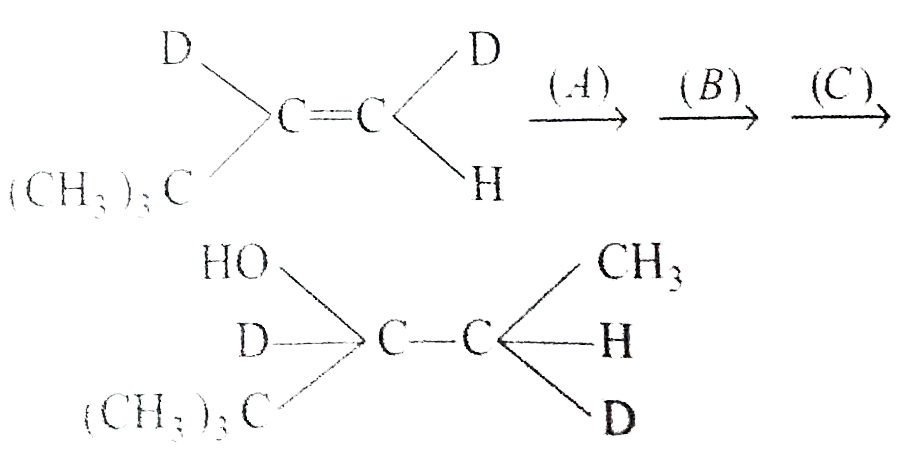
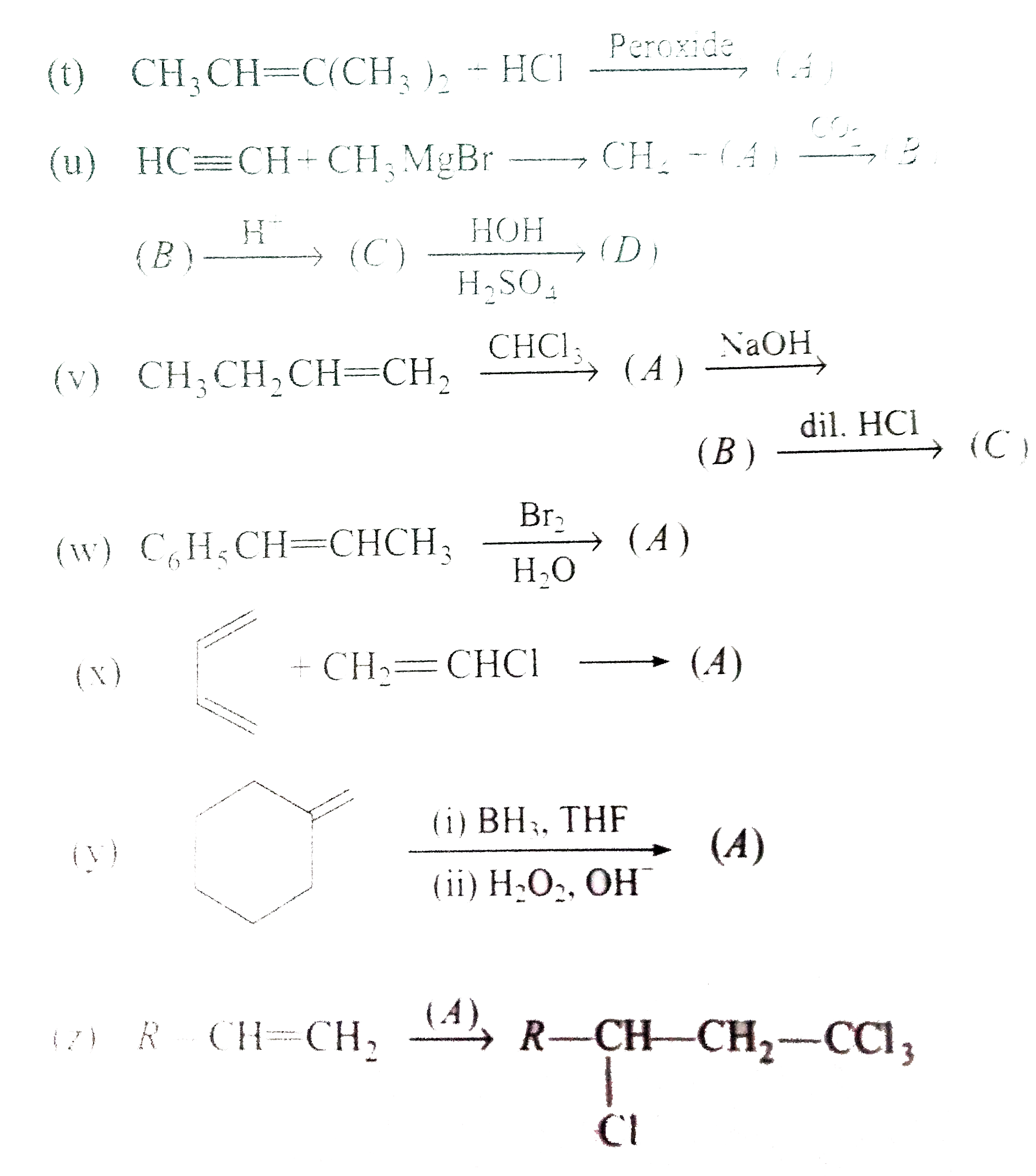
View SolutionIn the reaction Ph−C≡C−CH3H3O+−−−→HgSO4A,A is

View Solution
Knowledge Check
CH3−Ch2−c=HgSO4−−−→H2SO4, the compound A is
ACH3−CH2−CH(OH)−CH3BCH3−CH2−CH2−CHoCCH3−CH2−CH2−COOHDNone of theseCH≡CH+H2OH2SO4−−−→HgSO4X. In the following reaction X is
AacetadehydeBpropionaldehydeCketoneDethanolIn the reaction
Ph−C≡C−CH3H3O+−−−→HgSO4A, A isA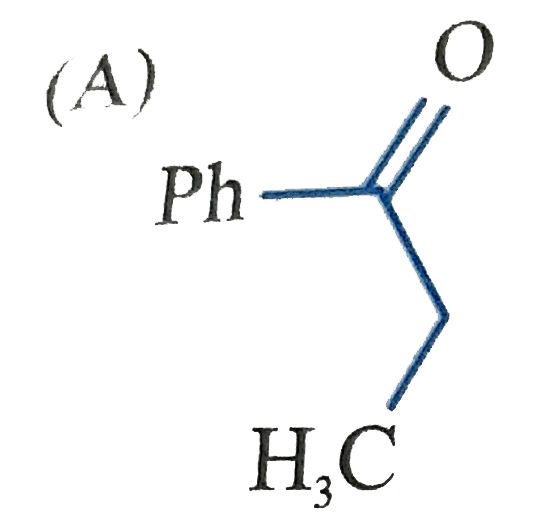 B
B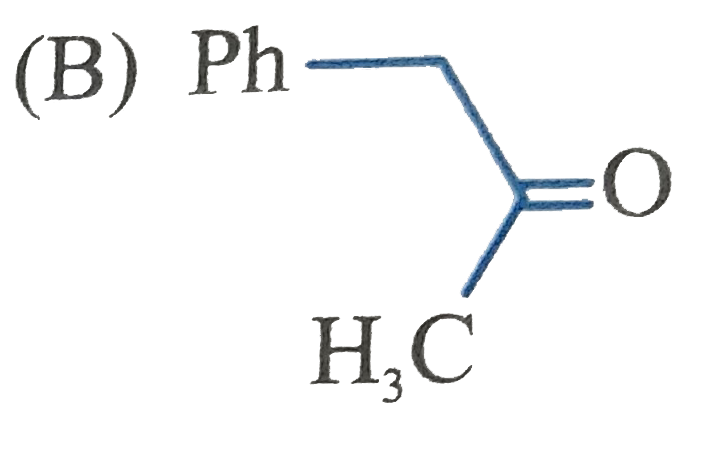 C
C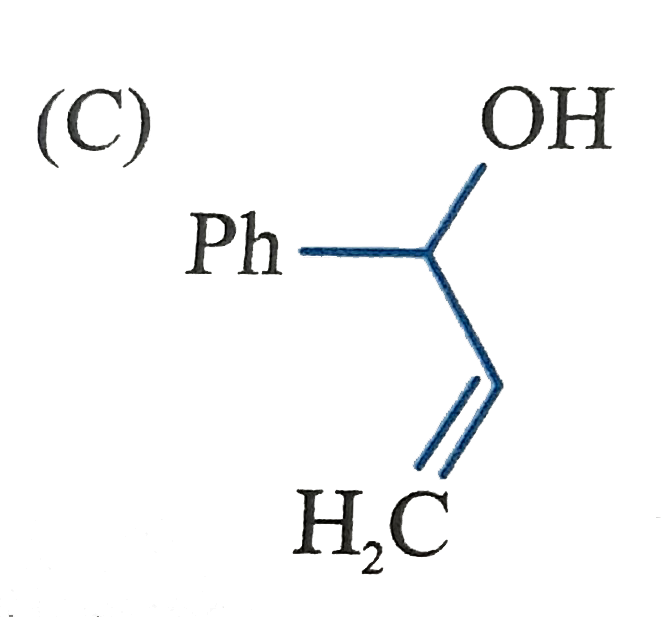 D
D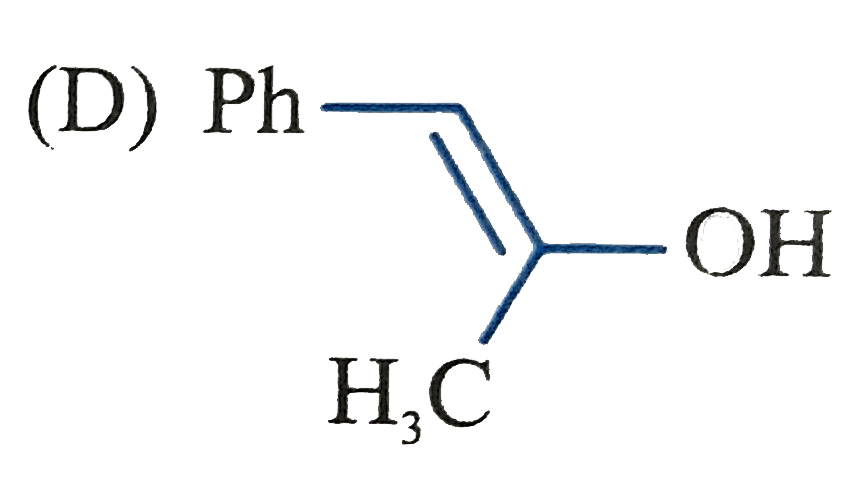
Ph−C≡C−CH3Hg2+/H2SO4(aq)−−−−−−−−−−−→A
The major product (A) formed is -
View SolutionCH3−C≡CHdil H2SO4−−−−−−−−→(HgSO4)(B)CHCI3−−−−−−−−→(NaOH)(C)
Compound (C) can be used as:
View SolutionH3C−C≡CHH2O,H4SO4−−−−−−−→HgSO4intermediateA→productB
View SolutionCH3−C≡CH40%H2SO4−−−−−−→1%HgSO4Aisomerisation −−−−−−−−→CH3−C∣∣O−CH3
Stucture of A and type of isomerism in the above reaction are respectively .
View SolutionIn the reaction
Ph−C≡C−CH3H3O+−−−→HgSO4A, A is
View Solution
